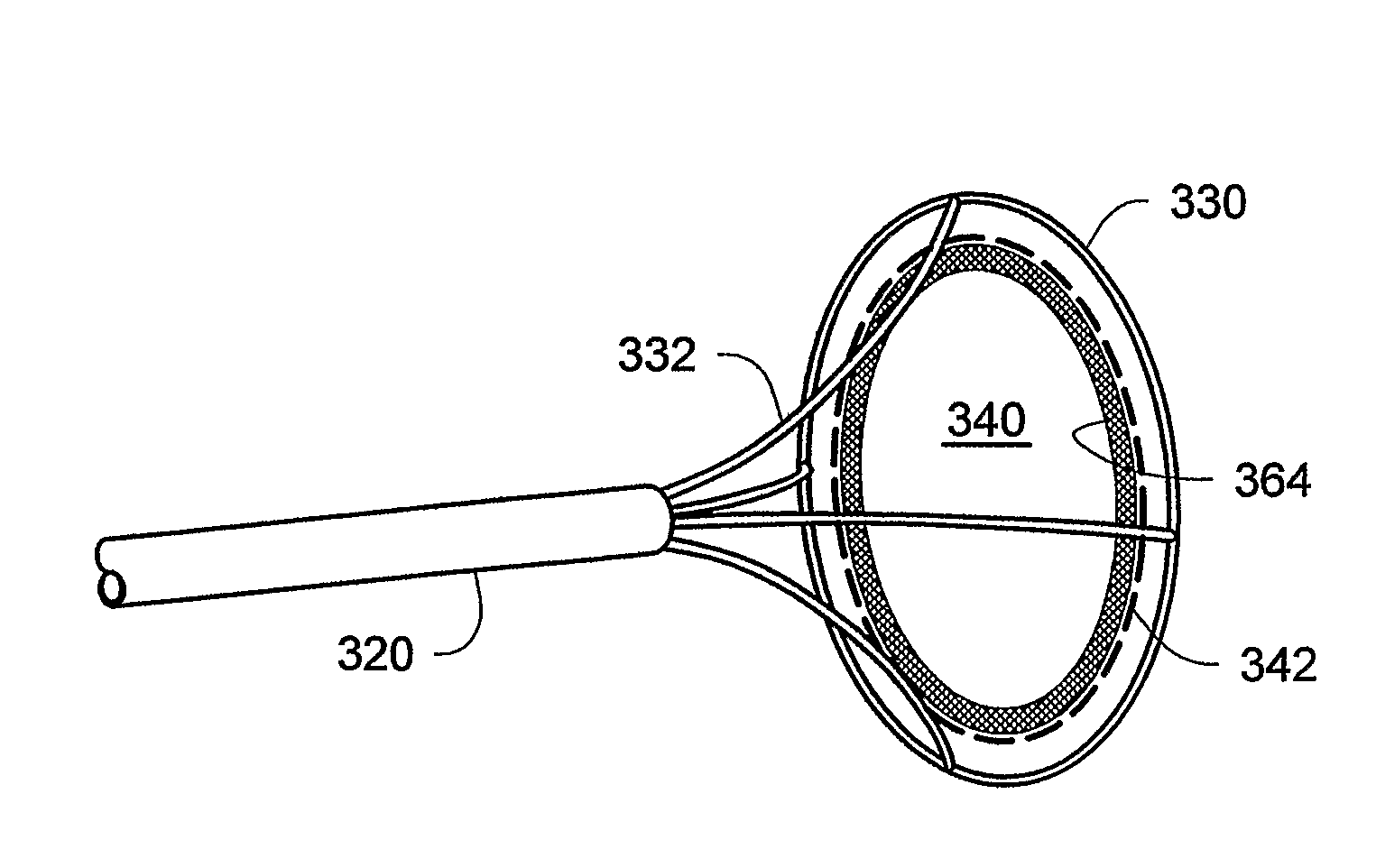Implantable closure apparatus and methods
- Summary
- Abstract
- Description
- Claims
- Application Information
AI Technical Summary
Benefits of technology
Problems solved by technology
Method used
Image
Examples
Embodiment Construction
[0048]In the following description of some exemplary embodiments of the invention, reference is made to the accompanying figures which form a part hereof, and in which are shown, by way of illustration, specific embodiments in which the invention may be practiced. It is to be understood that other embodiments may be utilized and structural changes may be made without departing from the scope of the present invention.
[0049]FIG. 1 is a perspective view of the distal end 22 of an optional delivery sheath 20 that may be used in the apparatus of the present invention. It is preferably in the form of a low profile, flexible tube that can be advanced to the heart via the vasculature over a wire using techniques and devices well known in the art. FIG. 2 is a perspective view of the delivery sheath of FIG. 1 in which a collapsible patch is being deployed out of the distal end 22 with the support of a deployment scaffold 31 that is depicted in its partially collapsed configuration.
[0050]FIG. ...
PUM
 Login to View More
Login to View More Abstract
Description
Claims
Application Information
 Login to View More
Login to View More - R&D
- Intellectual Property
- Life Sciences
- Materials
- Tech Scout
- Unparalleled Data Quality
- Higher Quality Content
- 60% Fewer Hallucinations
Browse by: Latest US Patents, China's latest patents, Technical Efficacy Thesaurus, Application Domain, Technology Topic, Popular Technical Reports.
© 2025 PatSnap. All rights reserved.Legal|Privacy policy|Modern Slavery Act Transparency Statement|Sitemap|About US| Contact US: help@patsnap.com



